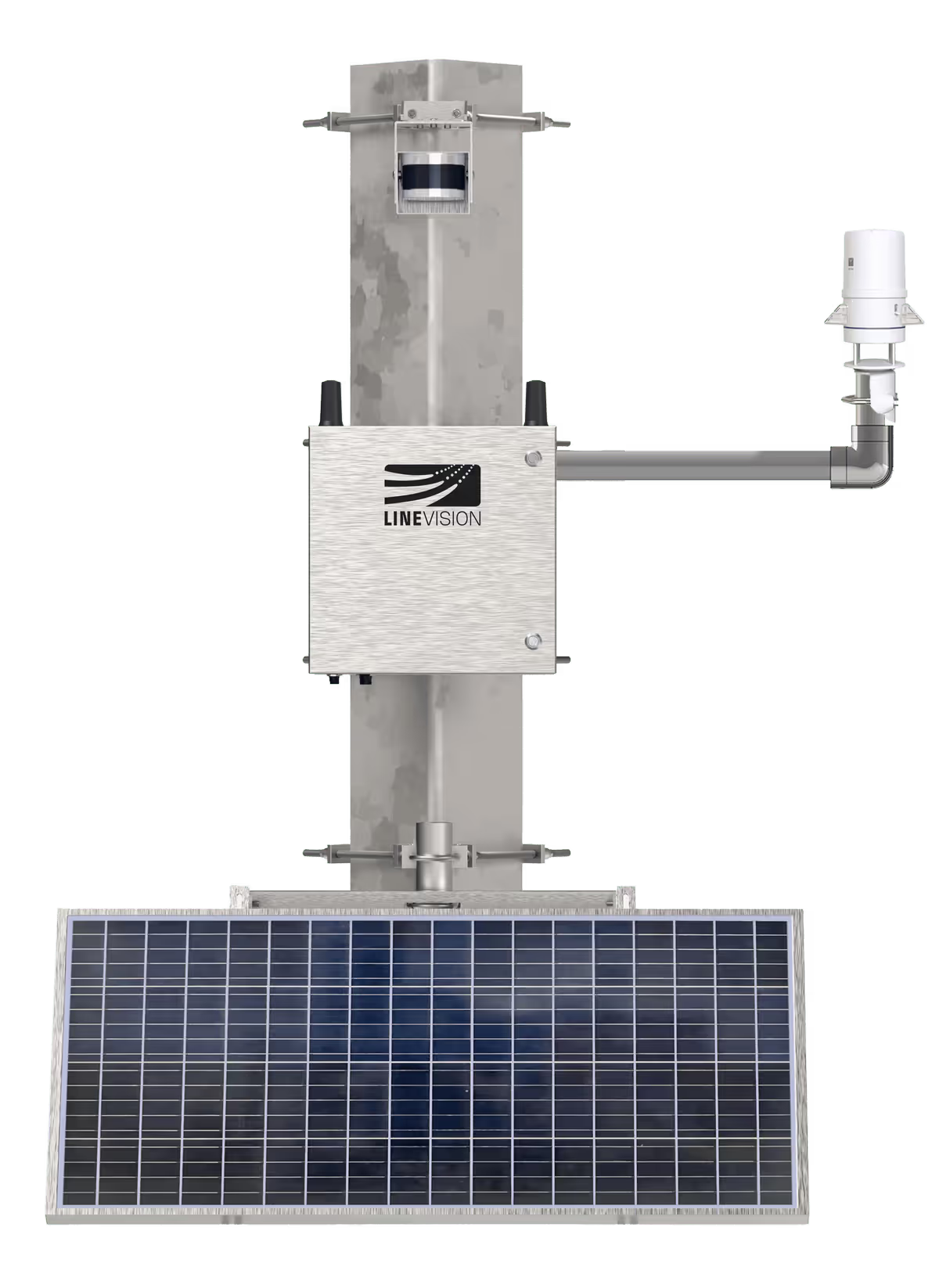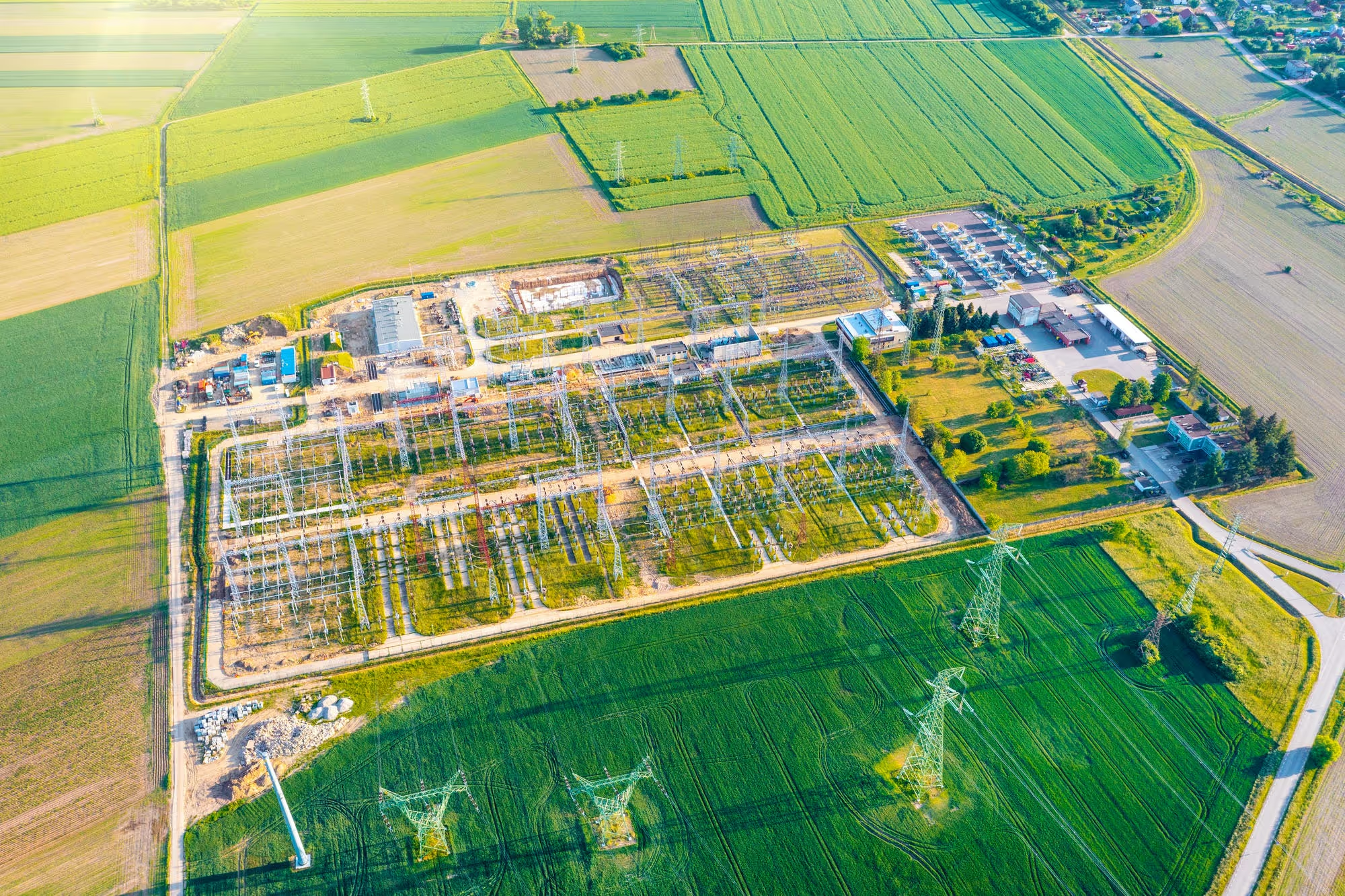Grid-Enhancing Technology Enhanced by Dynamic Line Rating Sensors
Utility-grade sensors and software that power data-driven decision making for optimized grid operations

LineVision LUX
The industry’s most widely installed sensor, LineVision LUX™ is an American designed, engineered, and assembled non-contact sensing platform that mounts quickly and securely to transmission structures rather than to live lines. This patented technology dramatically increases the safety, operational efficiency, and accuracy of data collected without interfering with the conductors.
The Non-Contact, No Outage Sensor
Non-contact sensor eliminates the need for expensive installation equipment, high-risk line crew work, or customer outages
Optical technology monitors all phases of multiple circuits and bundled conductors with just one sensor
Sensors collect granular real-time data, which train and validate LineVision methodologies and machine learning models for the most precise readings

Stainless steel enclosure and long-lasting Lithium Iron Phosphate (LiPO4) battery ensure lifetime reliability
Sensor data enhances uninstrumented lines nearby to train & enhance line ratings and wind accuracy
Designed, assembled, and tested in the US in harsh environmental conditions to guarantee a full hardware maintenance warranty for the life of contract
Specifications
optical Sensor
Weather Station
Battery
Enclosure
SOlar Panel
Integration & Operations
Software
LineVision's software platform is ISO 27001 certified and available on-premise or through secure cloud delivery. Our suite of solutions provides utilities with comprehensive visibility and data-driven insights into the capacity, health, and performance of their transmission lines. By combining real-world data with our proprietary methodologies, LineVision enables grid operators to optimize grid performance and reliability.
Data Portal
Flexible access to your data through a secure, cloud-based portal or hybrid on-premise option





Security-First Data Integration
Having previously integrated DLR into utility EMS systems with multiple partners, LineVision offers multiple options for operationalization based on your specific security need
On-Premise
Line Ratings are calculated fully on-premise in the Critical Infrastructure Protection (CIP)/SCADA environment
Utility Cloud
Line Ratings are calculated in the utility’s corporate environment in tandem with our weather API
We also offer a LineVision Cloud API and manual SCADA/EMA integration options

Facility and ratings management
Seamlessly manage all transmission facility ratings within the LineRate software, ensuring complete compliance with NERC FAC-008 requirements. LineVision’s software integrates non-conductor facility limitations, allowing complete facility ratings management including elements such as such as transformers, switches, wave traps, etc. as potential limiting factors alongside the conductor’s Dynamic Line Ratings.
White Glove Customer Service
LineVision’s US-based team is there to help at every step of the way. From assisting in your integration plan, meeting your cybersecurity needs, ensuring smooth change management, and providing ongoing technical support for contract life.
Utilities That Trusted LineVision to Integrate into Their Systems
Brian Gemmell
Chief Operating Officer Electric Operations, National Grid New York
Liz Cook
General Manager, Advanced Grid Solutions
FAQs
By mounting on towers, the LUX sensor has no voltage or temperature restrictions.
The installation of LineVision sensors never requires an outage. The LUX sensor mounts safely to the leg of transmission towers outside of the NESC clearance zone.
LineVision sensors are installed on towers in under 30 minutes. Sensor calibration and model quality checks are conducted to ensure ratings accuracy.
LineVision LUX sensors are assembled in New England, United States.
LineVision sensors transmit data via a secure VPN using cellular and/or satellite connection.
LineVision LUX is powered by solar power with a backup Lithium Iron Phosphate (LiFePO4) battery. Solar panel configuration is determined by install location and is scoped to ensure consistent power worldwide. LUX’s design ensures sensor availability through line outages and low-loading scenarios.
LineVision systems are designed to be as maintenance-free as possible. The LUX device has onboard diagnostics to notify LineVision support staff. Any hardware replacements are covered under the warranty included in all LineAware service agreements.
LineVision will continue to provide robust line ratings in the event of a sensor outage.LineVision's sensors and Computational Fluid Dynamics are used to train a DLR model which runs independently of any direct connection to field sensors ensuring constant DLR availability which allows LineVision to offer the highest SLA in the industry.
Component ratings can be provided by database connection, file imports, or API.



